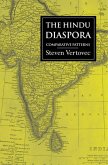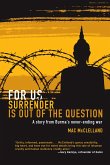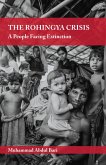The Khmer Empire was the most powerful in Southeast Asia for 600 years. Ruled by kings called "god-kings," it dominated much of the Mekong and Chao Phraya River basins between 802 and 1431 and built some of the most impressive temples in the world. Cambodia, Laos, Thailand, and Vietnam are all former Khmer territories. For hundreds of years before its collapse in 1431, the Khmer Empire dominated Southeast Asia. With its capital at Angkor, it was the region's largest and most powerful Empire, incorporating parts of Vietnam, Thailand, Burma, and Malaysia into its territory.
Historians disagree on the reason for its fall. One theory is that it was a result of an internal power struggle. Another theory is that the Empire's citizens were unhappy with their ruler and demanded another leader, which led to the collapse of Angkor. Another popular theory is that because no central government was in charge, local leaders started fighting with each other over land rights.
Some historians also think that foreign invaders might have played a role in ending Khmer influence over Southeast Asia and causing their downfall. They say this because after Angkor was abandoned by its people and left unattended for centuries, several different groups took control over it-including Europeans who colonized Vietnam and Thailand during this period (18th century). To them, this suggests there must've been some conflict between these new rulers of the Khmer Empire."
Historians think Angkor had a population between 750,000 and 1 million by the 12th century, making it one of the largest cities ever built. Angkor Wat is also the largest religious building in the world, with a footprint of 400 acres or 162 hectares. It covers an area greater than Manhattan Island in New York City. Angkor Wat was built as a Hindu temple, but it also reflects influences from Buddhism and Jainism. The temple was constructed by King Suryavarman II during his reign from 1113 to 1145. It took about 30 years to build, but today only 15 percent of the original structure remains standing. The architecture at Angkor is unmatched for its scale, complexity, and harmony. Compared to other temple complexes in Asia, the temples of Angkor are the most significant religious buildings in the world.
Historians disagree on the reason for its fall. One theory is that it was a result of an internal power struggle. Another theory is that the Empire's citizens were unhappy with their ruler and demanded another leader, which led to the collapse of Angkor. Another popular theory is that because no central government was in charge, local leaders started fighting with each other over land rights.
Some historians also think that foreign invaders might have played a role in ending Khmer influence over Southeast Asia and causing their downfall. They say this because after Angkor was abandoned by its people and left unattended for centuries, several different groups took control over it-including Europeans who colonized Vietnam and Thailand during this period (18th century). To them, this suggests there must've been some conflict between these new rulers of the Khmer Empire."
Historians think Angkor had a population between 750,000 and 1 million by the 12th century, making it one of the largest cities ever built. Angkor Wat is also the largest religious building in the world, with a footprint of 400 acres or 162 hectares. It covers an area greater than Manhattan Island in New York City. Angkor Wat was built as a Hindu temple, but it also reflects influences from Buddhism and Jainism. The temple was constructed by King Suryavarman II during his reign from 1113 to 1145. It took about 30 years to build, but today only 15 percent of the original structure remains standing. The architecture at Angkor is unmatched for its scale, complexity, and harmony. Compared to other temple complexes in Asia, the temples of Angkor are the most significant religious buildings in the world.
Dieser Download kann aus rechtlichen Gründen nur mit Rechnungsadresse in A, B, CY, CZ, D, DK, EW, E, FIN, F, GR, H, IRL, I, LT, L, LR, M, NL, PL, P, R, S, SLO, SK ausgeliefert werden.









